Disclosure: This article contains affiliate links. We may earn a commission from purchases at no extra cost to you, which helps our travel content.
There's something deliciously audacious about pairing two wildly different destinations in a single journey. When a surprise opportunity to guest lecture at Charles University in Prague appeared in my inbox just days after I'd finally secured permits for some lesser-visited tombs in Cairo, I initially laughed at the cosmic timing. Then, I did what any archaeology-obsessed traveler would do: plotted how to transform this scheduling coincidence into an epic two-week adventure spanning continents, millennia of history, and dramatically different cultures. What emerged was a journey from the scorching desert shadows of ancient pyramids to the cool, cobblestoned lanes beneath Gothic spires—a trip that would challenge even seasoned travelers but reward them with incomparable cultural riches. This itinerary isn't for the faint-hearted, but for couples seeking both ancient wonders and European charm without completely draining your savings account, this Cairo-Prague combination delivers an unforgettable adventure that spans 5,000 years of human civilization in just 14 days.
Planning Your Cairo-Prague Adventure
The key to making this seemingly mismatched itinerary work is thoughtful planning. I recommend dedicating 7-8 days to Cairo and 6-7 days to Prague, with a travel day in between. Fall offers the perfect window for both destinations—Cairo's blistering summer heat subsides to manageable temperatures in October and November, while Prague enjoys crisp, golden days before winter's chill sets in.
For flights, I scored a surprisingly affordable multi-city ticket through Turkish Airlines with a brief layover in Istanbul between Cairo and Prague. This routing often proves more economical than two separate round-trips and eliminates backtracking. Set fare alerts about 4-5 months in advance using flight tracker to catch price drops—I managed to snag tickets for just under $750 per person.
Packing for these contrasting destinations requires strategy. Cairo demands modest clothing that covers shoulders and knees while providing protection from heat and sun, while Prague's fall weather calls for layers and walking shoes for cobblestone streets. I lived out of my trusty travel backpack which has accompanied me from Andean mountain trails to Mediterranean coastal towns. Its multiple compartments allowed me to organize warm-weather and cool-weather clothing separately, and its carry-on size meant no waiting at baggage claim during my tight connection in Istanbul.
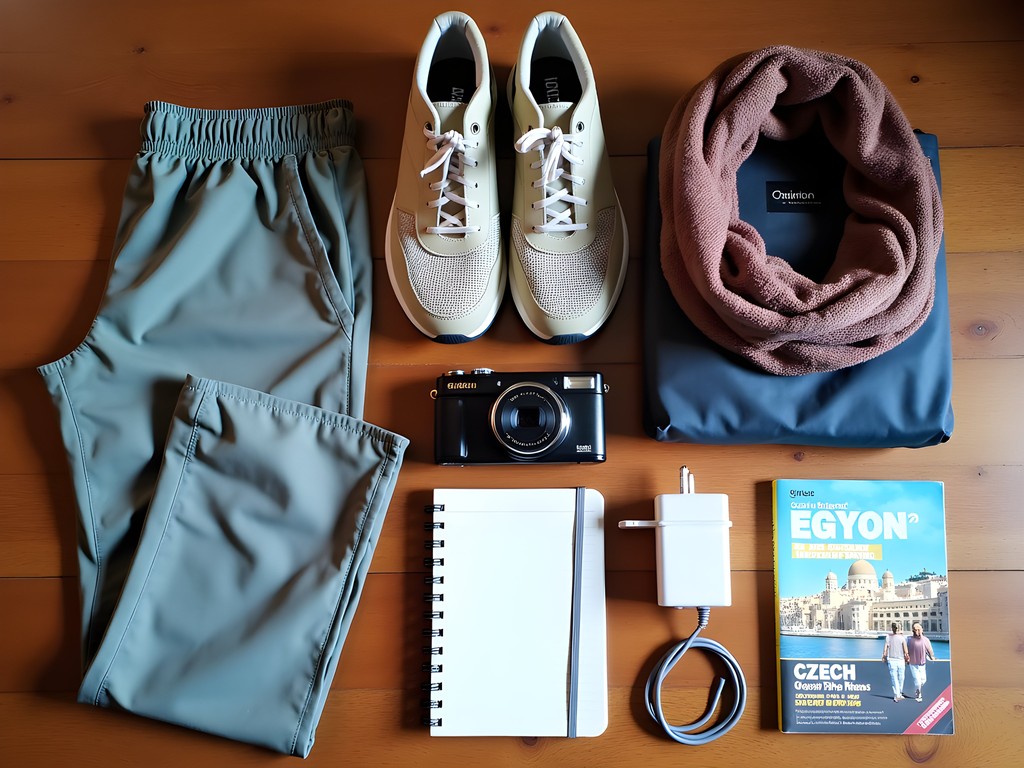
💡 Pro Tips
- Book multi-city flights through Istanbul or Dubai for the best Cairo-Prague connections
- Pack a capsule wardrobe with lightweight layers that work for both destinations
- Apply for any needed visas at least 2 months before departure
Week One: Uncovering Cairo's Ancient Secrets
Cairo is a magnificent chaos—a city where ancient monuments stand defiantly amid a sprawling modern metropolis of 20 million souls. Begin your adventure with two days exploring the Giza Plateau, but with a twist: after visiting the Great Pyramid and Sphinx in the early morning (arrive by 7:30 am to beat both crowds and heat), venture beyond to the overlooked Pyramid of Menkaure and the fascinating Solar Boat Museum. On day two, hire a driver to take you to Saqqara and Dahshur, where you'll find the Step Pyramid of Djoser (the world's oldest stone monument) and the distinctively-angled Bent Pyramid—often with barely another tourist in sight.
Spend day three at the Egyptian Museum, but don't rush. When I visited last fall, I dedicated six full hours to explore its treasures, including the breathtaking Tutankhamun collection. The museum's recent reorganization has improved the flow, though labels remain minimal—bring a good guidebook or hire a guide for context. The museum cafe offers a surprisingly decent lunch and welcome air conditioning.
For days four and five, dive into Islamic Cairo. The medieval streets around Al-Azhar Mosque and Khan el-Khalili bazaar transported me back centuries. While guidebooks often recommend a quick morning visit, I spent two full days here, discovering hidden caravanserais (merchant inns), sampling street foods like koshari and ta'ameya, and chatting with shopkeepers over countless tiny glasses of mint tea. Don't miss the Al-Muizz street with its restored medieval buildings, especially magical around sunset when the limestone facades glow golden.
Reserve your sixth day for the often-overlooked Coptic Cairo, where churches and synagogues reveal Egypt's religious diversity. The Hanging Church and Ben Ezra Synagogue sit atop Roman ruins, creating a physical timeline of Cairo's layered history. I found a small family-run restaurant nearby called Felfela that serves traditional Egyptian dishes without the tourist markup.
On your final Cairo day, take a breather at Al-Azhar Park—an oasis of greenery offering panoramic city views—before ending with a sunset felucca ride on the Nile, where the ancient river provides a peaceful counterpoint to the city's intensity.
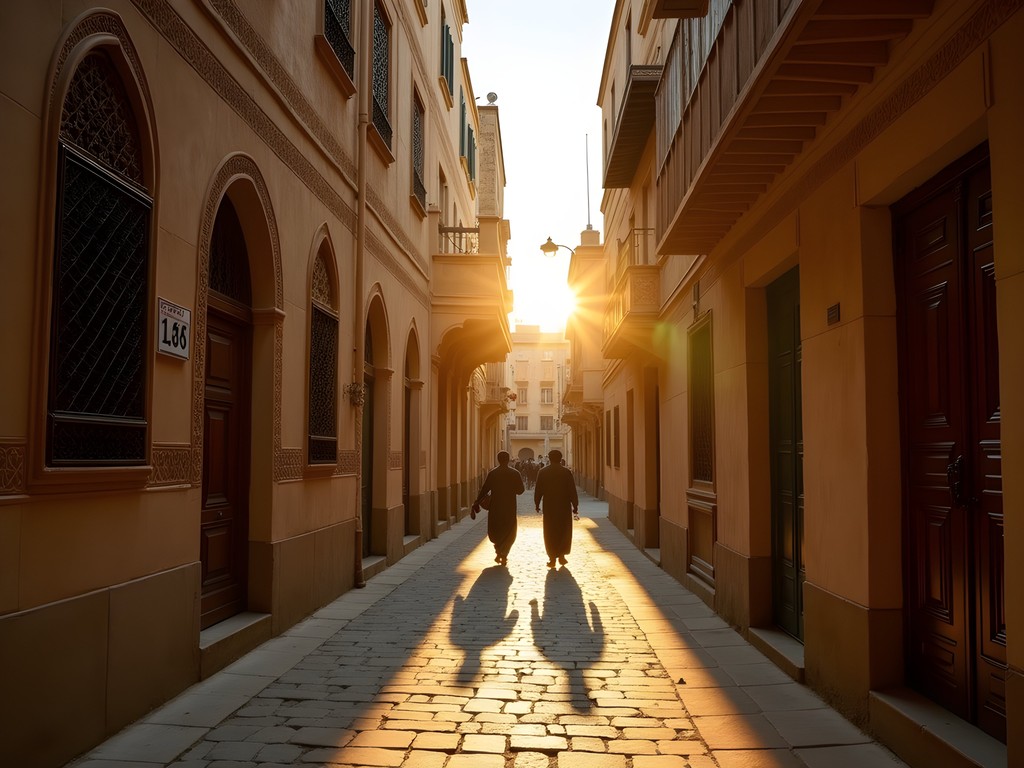
💡 Pro Tips
- Visit Giza before 8am to avoid crowds and midday heat
- Negotiate taxi fares upfront or use Uber for more predictable pricing
- Wear comfortable closed-toe shoes—archaeological sites are dusty and uneven
The Cultural Bridge: From Egyptian Antiquities to Bohemian Treasures
The transition day between Cairo and Prague offers a fascinating cultural whiplash that's part of the adventure's charm. My flight departed Cairo in the evening, allowing for a final morning visit to my favorite Cairo coffee shop, Kafein, where I journaled my observations while watching the city pulse around me. The contrast between leaving Cairo's sensory overload—the calls to prayer, persistent vendors, and perpetual honking—and arriving in Prague's ordered, Gothic beauty creates a delicious cultural dissonance that makes you appreciate both worlds more deeply.
Use the travel day to mentally shift gears by reading about your next destination. I devoured a short history of Prague on the flight, which helped me understand the layers of history I was about to encounter. If your connection allows, a quick shower in an airport lounge can work wonders for your mood after the long journey—I've found the travel towel indispensable for freshening up during transit days.
Expect some jetlag with this itinerary. Cairo operates on Eastern European Time while Prague follows Central European Time, but the greater adjustment comes from the dramatic shift in pace and environment. Give yourself permission to sleep in the first morning in Prague—the city's magic actually intensifies in the evenings when day-trippers have departed.
One unexpected bridge between these seemingly disparate destinations: both Cairo and Prague have been shaped by rivers that served as their lifeblood. The Nile and Vltava have different characters—one ancient and storied, the other romantic and winding—but both offer similar respite from urban intensity. Consider how water has shaped civilization in both locations, from the Nile's annual floods that created Egyptian agriculture to the Vltava's bridges that unified Prague's distinct neighborhoods.
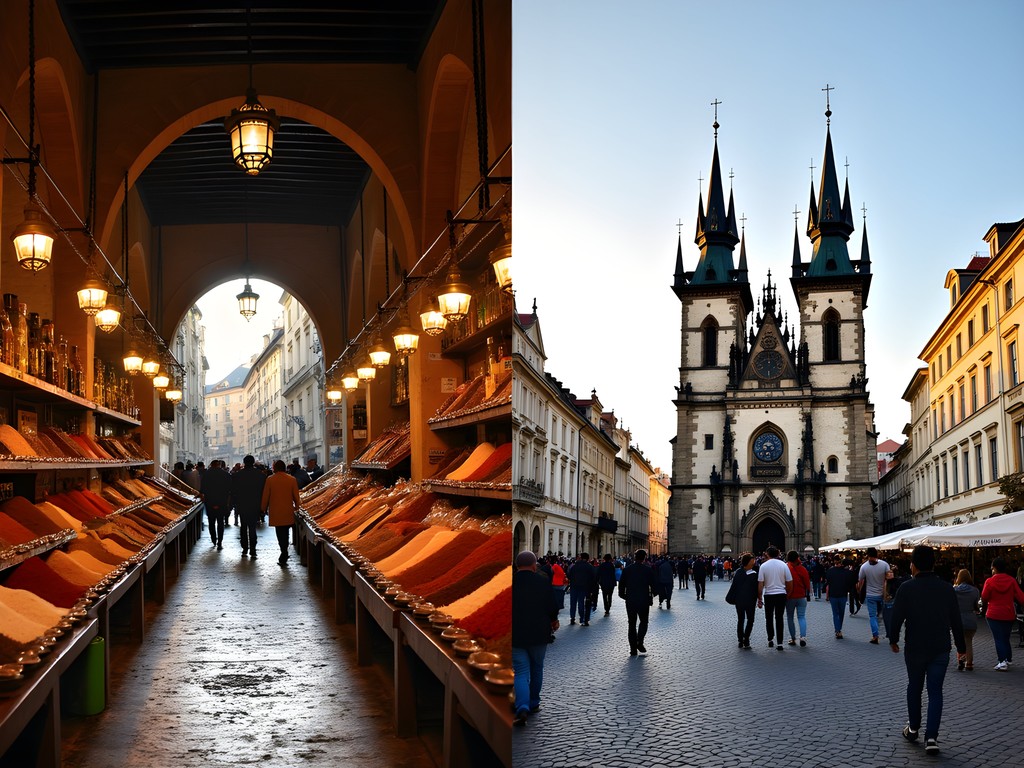
💡 Pro Tips
- Schedule at least one full day between destinations to account for travel fatigue
- Download offline maps and translation apps before leaving Cairo
- Keep a small journal to document the contrasting sensory experiences
Week Two: Prague's Architectural Tapestry
While Cairo overwhelms with ancient grandeur, Prague seduces with architectural harmony spanning Gothic, Renaissance, Baroque, and Art Nouveau styles. Begin your Prague adventure by getting oriented with a leisurely stroll across Charles Bridge (ideally at dawn before the crowds) and through Old Town Square, where the Astronomical Clock has marked time since 1410.
For your second day, tackle Prague Castle, but with insider savvy. Purchase tickets online to avoid queues, and arrive when it opens. The castle complex is actually a collection of buildings, with St. Vitus Cathedral as its crown jewel. I spent hours mesmerized by the cathedral's stained glass, particularly Mucha's stunning Art Nouveau window. After exploring the castle, wander down through the picturesque Malá Strana district, stopping at a hidden gem I discovered—Vojanovy Sady, Prague's oldest garden where peacocks roam freely among medieval fruit trees.
On day three, dive into Prague's Jewish history in Josefov, the preserved Jewish Quarter. The Old-New Synagogue (Europe's oldest active synagogue) and the hauntingly beautiful Old Jewish Cemetery reveal stories of persecution and resilience. Nearby, the Spanish Synagogue's Moorish interior provides an unexpected connection to the Islamic architecture you experienced in Cairo.
Reserve day four for exploring Prague's less-visited neighborhoods. I spent a fascinating morning in Vyšehrad, the city's other castle complex, where fewer tourists meant I could linger in the cemetery where Czech luminaries like Dvořák and Mucha rest. In the afternoon, I wandered through Vinohrady, a residential neighborhood with stunning Art Nouveau buildings and local cafes where I could practice my embarrassingly limited Czech phrases with patient baristas.
For your fifth day, embrace Prague's artistic side. The National Gallery's collection at the Veletržní Palace houses an impressive array of Czech and European art, including Mucha's Slav Epic and works by Picasso and Van Gogh. Later, explore the quirky public sculptures by David Černý scattered throughout the city—from the rotating Kafka head to the upside-down horse in Lucerna Passage.
On your final full day, take a day trip to either Kutná Hora (home to the macabre Sedlec Ossuary decorated with human bones) or the picturesque castle town of Český Krumlov. Both are easily accessible by train, and I used my travel camera to capture the stunning medieval architecture and countryside views. The compact size meant I could slip it into my jacket pocket between shots, unlike the bulkier DSLR I lugged through Egypt.

💡 Pro Tips
- Purchase a 3-day Prague Card if you plan to visit multiple museums and attractions
- Explore Prague Castle grounds after 5pm when entry becomes free (though buildings are closed)
- Try local Pilsner beers at neighborhood pubs rather than tourist spots for better prices and atmosphere
Culinary Adventures: From Koshari to Goulash
One of the most delightful aspects of this dual-destination journey is the dramatic shift in culinary experiences. In Cairo, I embraced street food with cautious enthusiasm (a mild case of traveler's tummy is almost a rite of passage). The working-class dish koshari—a hearty mix of rice, lentils, pasta, and spicy tomato sauce topped with crispy onions—became my lunchtime staple, especially from Abu Tarek near downtown. For breakfast, I'd seek out fuul (stewed fava beans) and ta'ameya (Egyptian falafel made with fava beans instead of chickpeas), often served with baladi bread still warm from wood-fired ovens.
Cairo's coffee culture surprised me with its richness. Beyond Turkish-style coffee (called ahwa in Egypt), I discovered soothing sahlab—a warm, creamy orchid-root drink topped with nuts and cinnamon—perfect for chilly evenings. For dinner, I alternated between local koshary joints and slightly more upscale restaurants like Zooba and Felfela, where I could sample classics like molokhiya (jute leaf stew) and hamam mahshi (stuffed pigeon).
Prague presented an entirely different gastronomic landscape. Heavy, hearty dishes dominate Czech cuisine—perfect for cool autumn days. Traditional svíčková (marinated beef with bread dumplings and cream sauce) and guláš (goulash) warmed me after hours of walking Prague's cobblestone streets. I discovered a cozy restaurant called Lokál that serves tank-fresh Pilsner Urquell alongside perfectly executed Czech classics at reasonable prices.
Beyond traditional fare, Prague surprised me with its emerging food scene. I splurged on one memorable dinner at Field, a Michelin-starred restaurant offering modern interpretations of Czech ingredients. Their beetroot variation—prepared five different ways on one plate—changed how I think about this humble root vegetable.
Don't miss Prague's café culture, a tradition dating back centuries. I spent rainy afternoons at Café Louvre (once frequented by Kafka and Einstein) and Café Savoy, nursing excellent coffee and sampling Czech pastries like větrník (caramel-glazed choux) and koláče (fruit-filled pastries). To document these culinary adventures, I used my travel journal to paste in menus, sketch memorable dishes, and note favorite flavors—a delicious souvenir that cost less than most refrigerator magnets.
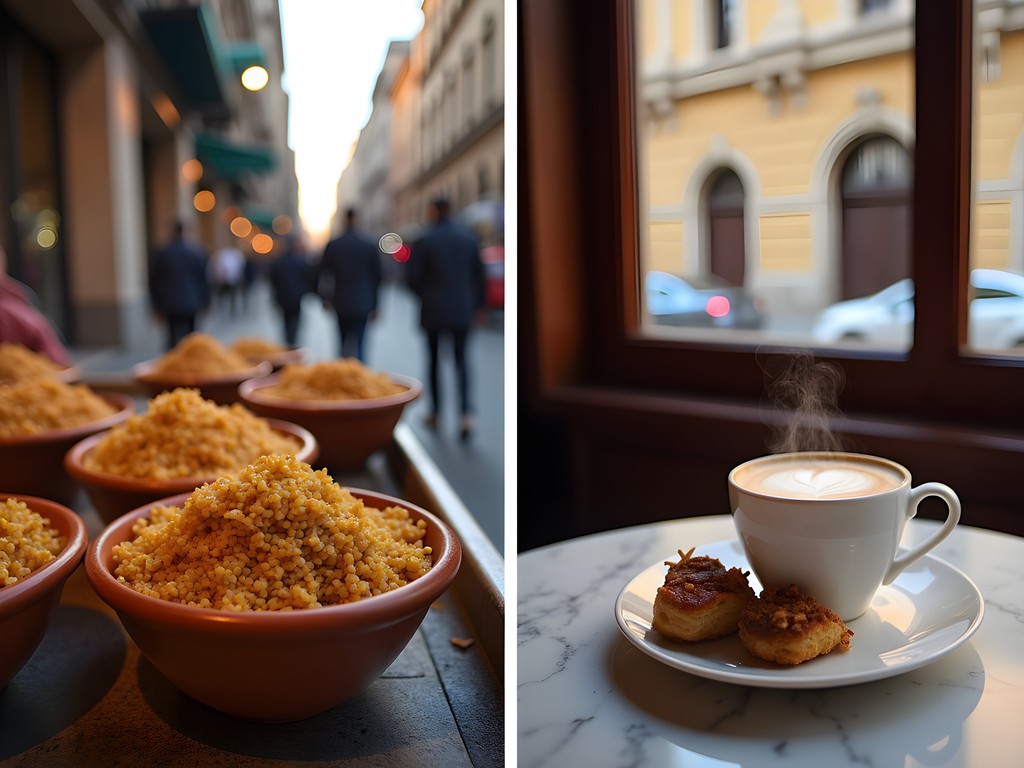
💡 Pro Tips
- In Cairo, look for restaurants where locals eat, but ensure they have high turnover for freshness
- Try Prague's open-faced sandwiches (chlebíčky) for an affordable lunch option
- Book one special meal in each city as a splurge—the contrast will enhance your memory of both
Navigating Cultural Differences & Practical Matters
This itinerary bridges dramatically different cultures, making it both challenging and rewarding. In Cairo, patience becomes your greatest asset—things rarely run on schedule, and what might seem like chaos often conceals its own functional logic. I learned to add buffer time to every plan and embrace the Egyptian concept of bukra inshallah (tomorrow, God willing), which reflects a more flexible approach to time than most Westerners are accustomed to.
Dressing appropriately in Egypt requires modest clothing covering shoulders and knees for both men and women. I packed several lightweight, loose-fitting outfits that respected local customs while keeping me cool. Women may want to carry a scarf for impromptu mosque visits or for areas where more coverage feels appropriate. In Prague, practical walking shoes became my priority—those picturesque cobblestones are murder on ankles if you're wearing anything less supportive.
Language presents different challenges in each location. In Cairo, learning a few Arabic phrases opened doors to warmer interactions, though English is widely spoken in tourist areas. My pronunciation attempts often elicited smiles, but the effort was invariably appreciated. In Prague, Czech is notoriously difficult, but younger Czechs often speak excellent English. Still, learning basic greetings and 'thank you' (děkuji) demonstrates respect.
Money management requires different strategies in each country. In Egypt, cash is king—I withdrew moderate amounts of Egyptian pounds from ATMs as needed and kept small denominations handy for tips (baksheesh) and small purchases. Credit cards work in hotels and upscale restaurants but aren't universally accepted. Prague, conversely, is increasingly cashless, though having some Czech crowns remains useful for smaller establishments and markets.
Internet connectivity varies dramatically between destinations. In Cairo, I relied on a local SIM card purchased at the airport (bring an unlocked phone) for affordable data. Prague offers excellent connectivity with EU roaming options or widely available WiFi. My portable wifi proved invaluable in Egypt, allowing me to connect multiple devices while navigating the sometimes labyrinthine streets of Islamic Cairo.
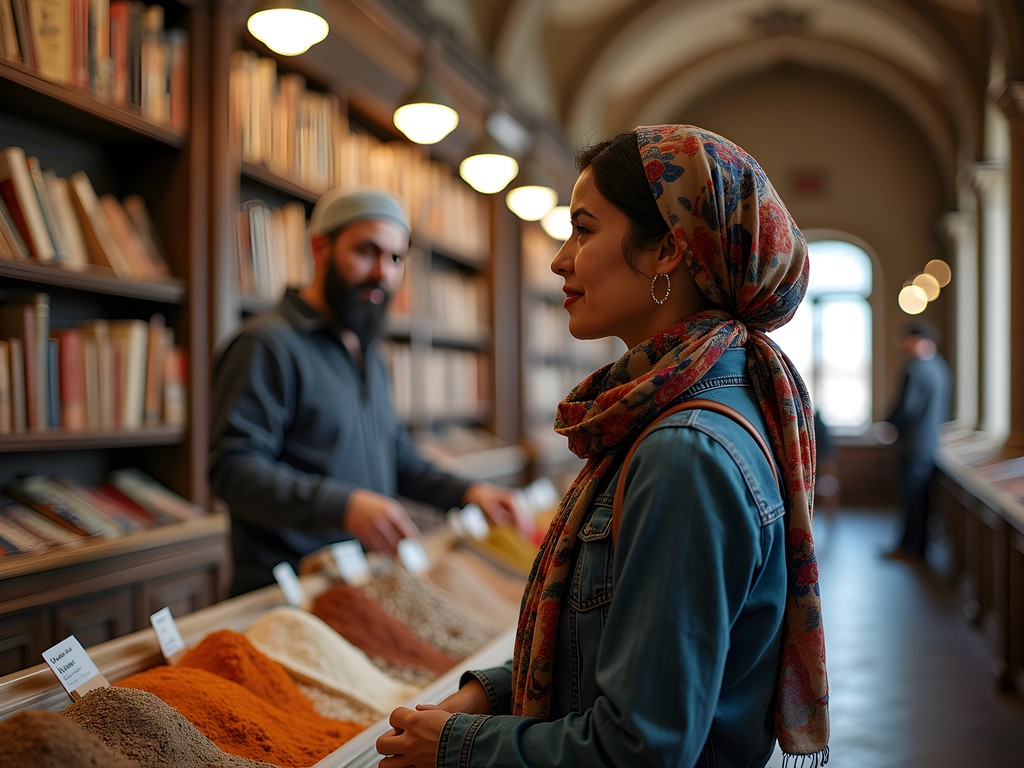
💡 Pro Tips
- Learn at least 5-10 basic phrases in both Arabic and Czech
- Carry toilet paper or tissues in Egypt for public restrooms
- Download offline Google Maps for both cities before arrival
Final Thoughts
As I boarded my flight home from Prague, my mind still swirled with the contrasts between these two remarkable destinations—the call to prayer echoing across Cairo's rooftops versus the hourly chime of Prague's astronomical clock; the ancient stillness inside a pyramid chamber versus the Gothic soaring of St. Vitus Cathedral; the spice-laden aromas of Egyptian markets versus the malty scent of Czech breweries. This journey wasn't merely about ticking off bucket-list sights but about experiencing how differently human civilization has expressed itself across continents and millennia. The beauty of this unconventional pairing lies precisely in its contrasts—each destination enhancing appreciation for the other through comparison. If you're seeking an adventure that challenges your perspectives while delivering incredible cultural riches, this Cairo-Prague combination offers a perfect alchemy of ancient mysteries and European elegance. Pack your curiosity alongside your camera, and prepare for a journey that spans not just geography, but the full breadth of human creativity and resilience.
✨ Key Takeaways
- Combining these contrasting destinations creates a richer travel experience than visiting either alone
- Fall offers ideal weather conditions for both locations
- Allow time for cultural adjustment between the dramatic shift from North Africa to Central Europe
- Budget travelers can navigate both destinations affordably by making strategic splurges
📋 Practical Information
Best Time to Visit
October-November or March-April
Budget Estimate
$2,500-3,500 per person (excluding flights)
Recommended Duration
14-16 days
Difficulty Level
Advanced

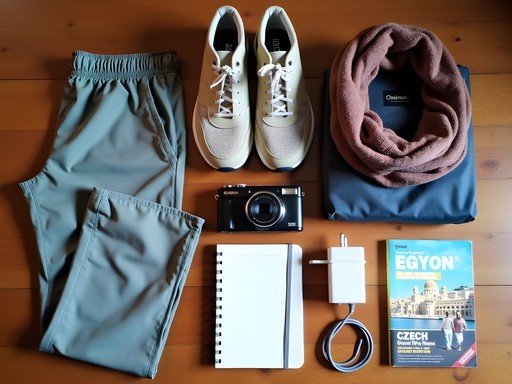
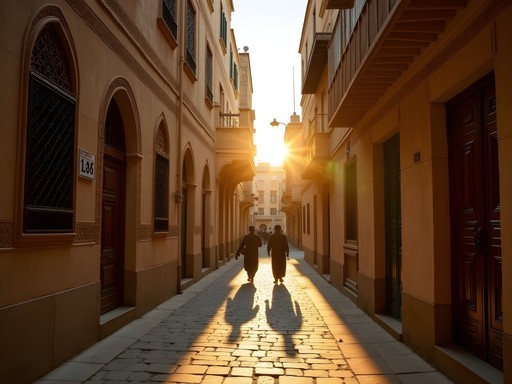
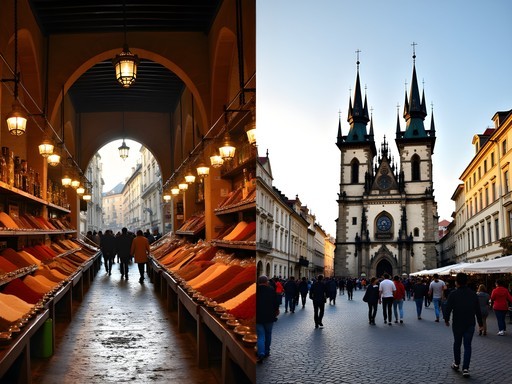
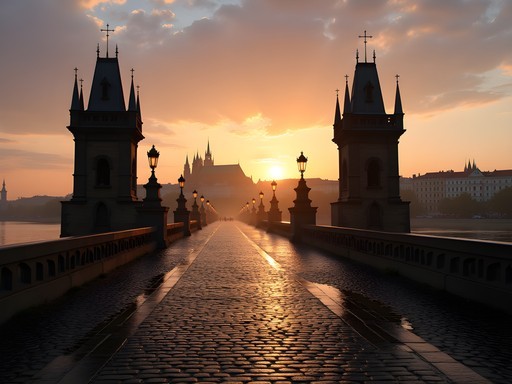
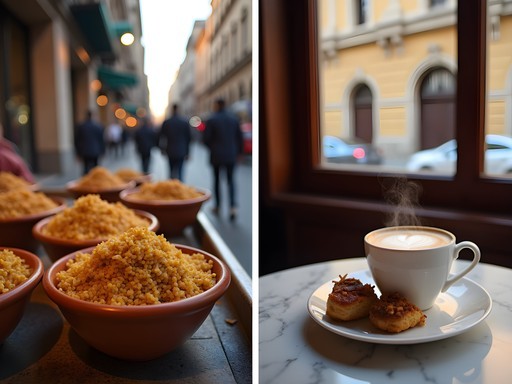
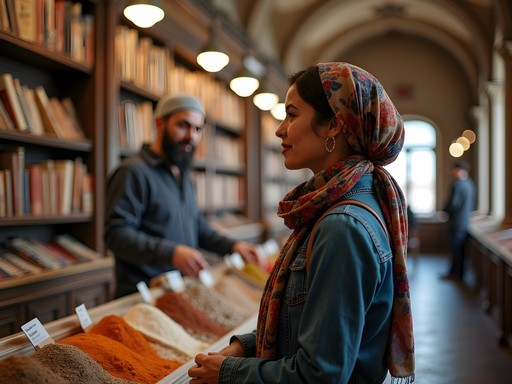


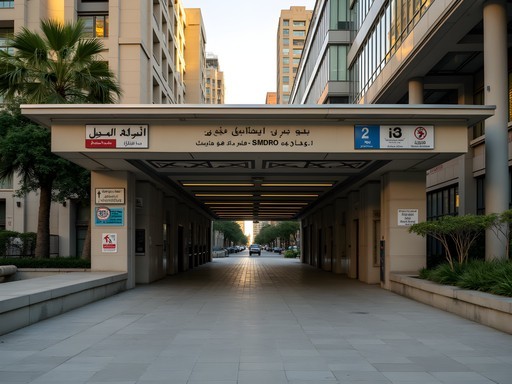
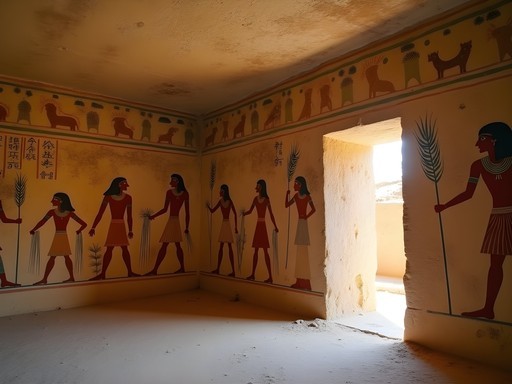


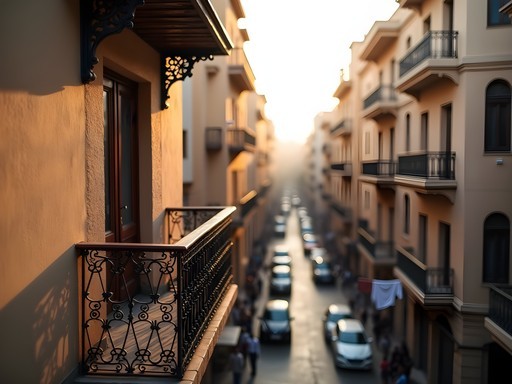



Comments
oceanperson
Those sunset photos from the Cairo citadel are STUNNING! Added both cities to my bucket list!
Nicole Russell
Violet! This is exactly the kind of bold itinerary mashup I live for! I did something similar last year but with Istanbul instead of Cairo paired with Prague. The cultural whiplash is part of the fun, right? 😂 Your tip about visiting Prague Castle first thing in the morning is GOLD - I made the mistake of going midday and the crowds were insane. One thing I'd add for anyone following your itinerary: the Mucha Museum in Prague is small but absolutely worth squeezing in if you love Art Nouveau. And in Cairo, I found taking a felucca ride on the Nile at sunset to be magical after a day of intense sightseeing. Did you have any issues with your flight connections between the two? I remember mine had a long layover in Vienna which actually turned into a mini bonus destination!
Violet Marshall
Nicole! Yes - cultural whiplash is the perfect term! Great tip on the Mucha Museum, I actually did visit but didn't include it in the final post (word count limits!). My connection was through Istanbul with just enough time to grab Turkish coffee. Next time I'll plan for a Vienna stopover like yours!
coffeequeen
This itinerary looks amazing! How did you handle the language barriers in both places? I'm planning something similar but nervous about getting around, especially in Cairo.
Violet Marshall
Cairo was actually easier than I expected! Most people in tourism speak English, and I learned a few Arabic phrases which were appreciated. Prague was similar - younger people especially speak good English. I did use a translation app occasionally in both places.
Nicole Russell
I'll add that having Google Translate downloaded with offline language packs for both Czech and Arabic was super helpful on my similar trip! The camera translation feature saved me so many times with menus and street signs.
luckyfan
What a brilliant combo, Violet! I did Cairo and Istanbul last year and thought THAT was a contrast, but Prague adds a whole different dimension. The way you described crossing that cultural bridge between Egyptian antiquities and Bohemian architecture is spot on. Did you find the temperature difference challenging? I went from sweating in Cairo to freezing in Istanbul within hours! Also, that local guide you mentioned for the pyramids - total game changer. I wish I'd known about them before my trip!
Violet Marshall
Thanks luckyfan! Yes, the temperature shift was definitely jarring - I packed layers and still found myself shopping in Prague for a warmer coat! Cairo-Istanbul sounds amazing too. The contrasts really make you appreciate each place more, don't they?
luckyfan
Absolutely! Something about the contrast makes both destinations more vibrant in memory. I'm stealing your Prague castle district morning routine for my next trip!
photorider
Those markets in Cairo look amazing! Was it hard to negotiate prices? I always feel so awkward haggling.
Violet Marshall
It's definitely an art! My rule was to offer 40% of initial price and settle around 60%. Always with a smile! The trick is being willing to walk away - that's when the real deals happen.
CairoExplorer
Having lived in Cairo for three years, I love seeing it paired with European destinations! Most tourists just do Cairo-Luxor-Aswan. Your section about the Museum of Egyptian Antiquities was spot on - it's overwhelming in the best way. One thing I'd add for anyone visiting Cairo: the new Grand Egyptian Museum near the pyramids is finally open and it's SPECTACULAR. Worth adjusting your itinerary for. The Tutankhamun collection alone will take your breath away. And don't skip Al-Azhar Park for sunset - it's where locals go and offers the best panoramic view of the city with the Citadel in the background.
Violet Marshall
Thanks for the insider tips! I was lucky to catch the Grand Egyptian Museum just after it opened - absolutely mind-blowing. And you're right about Al-Azhar Park, that sunset view is magical!
explorestar
First time traveler here! Would you recommend this combo for someone who's never been outside the US? Or is it too ambitious?
Megan Martin
Not Violet, but I'd say Prague is very beginner-friendly, while Cairo has more culture shock. Maybe start with Prague for 10 days and do a shorter Cairo add-on (4-5 days) if you're new to international travel.
Violet Marshall
Completely agree with Megan! Prague is super easy to navigate as a first-timer. Cairo is more challenging but incredibly rewarding.
TravelBug_Sam
We did the public transportation in Prague too and it was great! Pro tip: buy the 3-day transit pass, it covers all trams, buses and the metro. So much easier than individual tickets.
springmate8286
Good to know! Is it easy to figure out the routes?
TravelBug_Sam
Super easy! There's an app called 'IDOS' that gives you all the routes and times. Most signs are in English too.
Hunter Thompson
Brilliant post, Violet! I did Cairo solo last year but never thought to combine it with Prague. The cultural whiplash must be part of the fun! For anyone planning this trip, I'd add that the metro in Cairo is actually pretty decent for getting around - saved me loads of cash versus taxis. And in Prague, definitely get the 3-day transport pass and explore beyond the Old Town. The neighborhoods of Vinohrady and Žižkov have amazing local pubs where a beer costs half what you'd pay near Charles Bridge. Did you make it to any of the local spots, Violet?
Violet Marshall
Thanks Hunter! Yes - we spent an evening in Žižkov at this tiny jazz bar our Airbnb host recommended. Can't remember the name but it was near the TV tower. And totally agree on Cairo's metro - surprisingly efficient and SO cheap!
Hunter Thompson
Sounds like Jazz Dock maybe? That place is a gem! The TV tower with the crawling babies sculpture is an experience itself 😂
WanderlustQueen
Prague has been on my bucket list forever! Those castle views are stunning!
Venture X
Premium card with 2X miles, $300 travel credit, Priority Pass